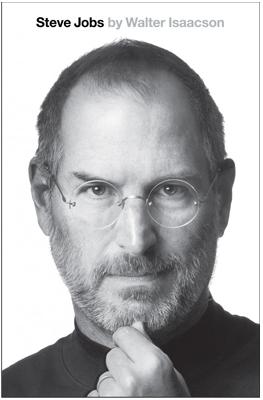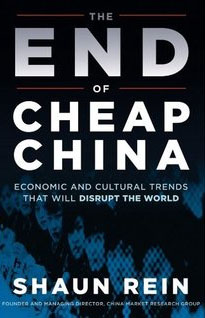Folks,
If you need to take a break from topics such as solder paste, solder preforms, tin whiskers, indium TIMs etc, there are a few books I would recommend reading.
 Most of you have probably already read Walter Isaacson’s biography of Steve Jobs. This work may be one of the most important in recent memory. It is hard to overstate how much Jobs influenced modern electronics. Whether you have a Mac or a PC, a Droid or an iPhone, an iPad or an eBook, an IPod or some other MP3 player, the design and function of the product was likely more influenced by Apple and Jobs than the company that made it.
Most of you have probably already read Walter Isaacson’s biography of Steve Jobs. This work may be one of the most important in recent memory. It is hard to overstate how much Jobs influenced modern electronics. Whether you have a Mac or a PC, a Droid or an iPhone, an iPad or an eBook, an IPod or some other MP3 player, the design and function of the product was likely more influenced by Apple and Jobs than the company that made it.
People can also understate Job’s influence in some important areas. As an example consider the graphical user interface (GUI) that Xerox PARC is given credit for inventing. While this point may be strictly true, the GUI would have been unlikely to become a widely successful product in PARC’s hands. Apple and Jobs incorporated it into the Mac and now all computers have a GUI. I’m reminded of Edison's statement, “Genius is 1% inspiration and 99% perspiration." Apple and Jobs added the perspiration, and quite a bit of the inspiration, to make PARC’s GUI a reality. The book covers the details of this interesting story.
Much is made of Jobs’s unusual personality evidenced by his parking in handicapped spots, poor treatment of people, and strange diet. It is likely he would still be alive if he listened to his doctors. But I don’t think people overstate the case when they say that 100 years from now he will be considered in the technical ranks with Edison and Kettering.
One interesting point that the book mentions, a point that many people seem to overlook, is the influence of Jobs’s adoptive father, Paul. Although I don’t think their relationship could be described as close, Paul was a perfectionist as a machinist and woodworker and this drive for perfectionism influenced Steve. This trait probably also led to Steve's passion for design. Considering that this aspect of Apple is likely its defining attribute, this point is not a small one. The book recounts a story in which Paul is making a wood cabinet for the family. As Paul was finishing it Steve noticed that even the wood in the back of the cabinet was first grade. Steve asked why that wood couldn’t be a cheaper grade because after all, no one would know, because it couldn’t be seen. The father responded “But, I would know.” Years later, the Apple engineers that designed the PCBs that would go into Apple PCs would find Paul’s son echoing the same sentiment. The PCBs had to look attractive because Steve Jobs would know if they didn’t - even if most customers would never see them.
Another timely book is The End of Cheap China, by Shaun Rein. In addition to the obvious point that wages have risen so much in China that it will no longer be the Mecca for off-shoring, Rein makes a few less obvious points. One point being that the concern that we in the electronics assembly arena have regarding counterfeit components goes far beyond ICs, passives, and other electronics components. The typical Chinese person is wary to buy food in the local markets, fearing that it might be tainted. Rein relates a comical story about chatting with a young Chinese woman who stated that she likes to eat at Kentucky Fried Chicken because the food is “healthy.” She went on to explain that, since it is a large American company, she trusts that the ingredients would be unaltered. She can count on the mashed potatoes not having cardboard in them! Such concerns are rampant in China. I was also surprised to see how poor the Chinese university-level education system is. Rein also discusses local versus central government, the Chinese real-estate boom and perhaps bust, China as a world power, and other topics. It is an interesting and fun read, but is a bit choppy in its writing style. In the end though, it left me feeling more confident in the future for the West. China will be a worthy competitor on the world economic stage, but its many challenges likely overshadow those of the Americas and Europe.
The Big Miss, about Hank Haney’s time as Tiger Wood’s golf coach, is an interesting read for golfers. In addition to the shocking discovery that Haney was paid very little as Tiger’s coach (apparently a standard practice), I was stunned by the revelation that Woods was so enamored with the SEALs that he was able to convince the Navy to let him train with this elite group. According to Haney, Woods was considering giving up golf to become a SEAL! I also was surprised to learn that, even though Haney and Tiger’s caddy Steve Williams were, in many ways, close to him, there were times that Woods would not speak to them for hours while they were working together. Apparently, they were afraid to try and “break the ice.” As I write this (Saturday June 16, 2012) Tiger is tied for first in the US Open. I wish him well.
Cheers,
Dr. Ron




